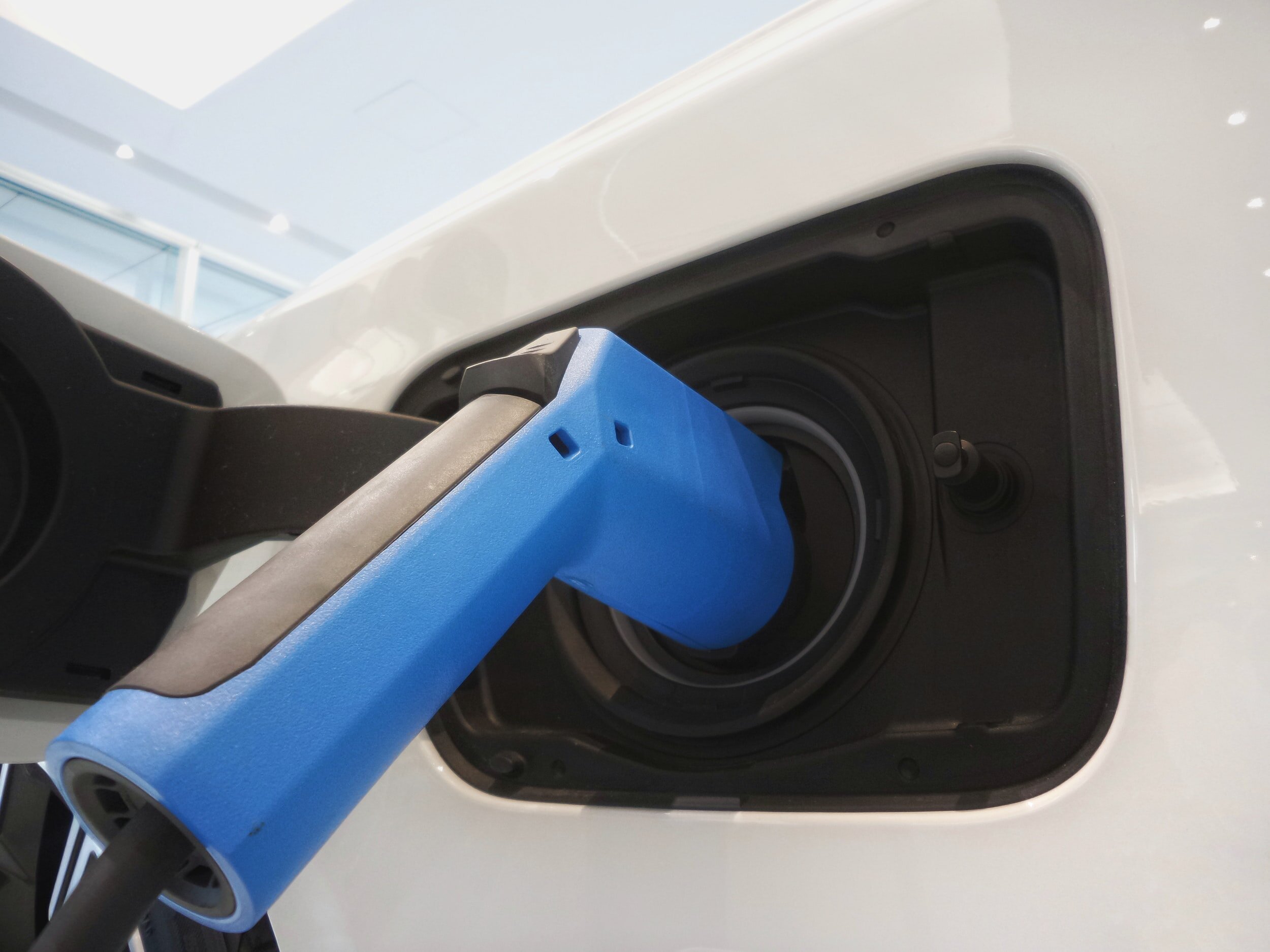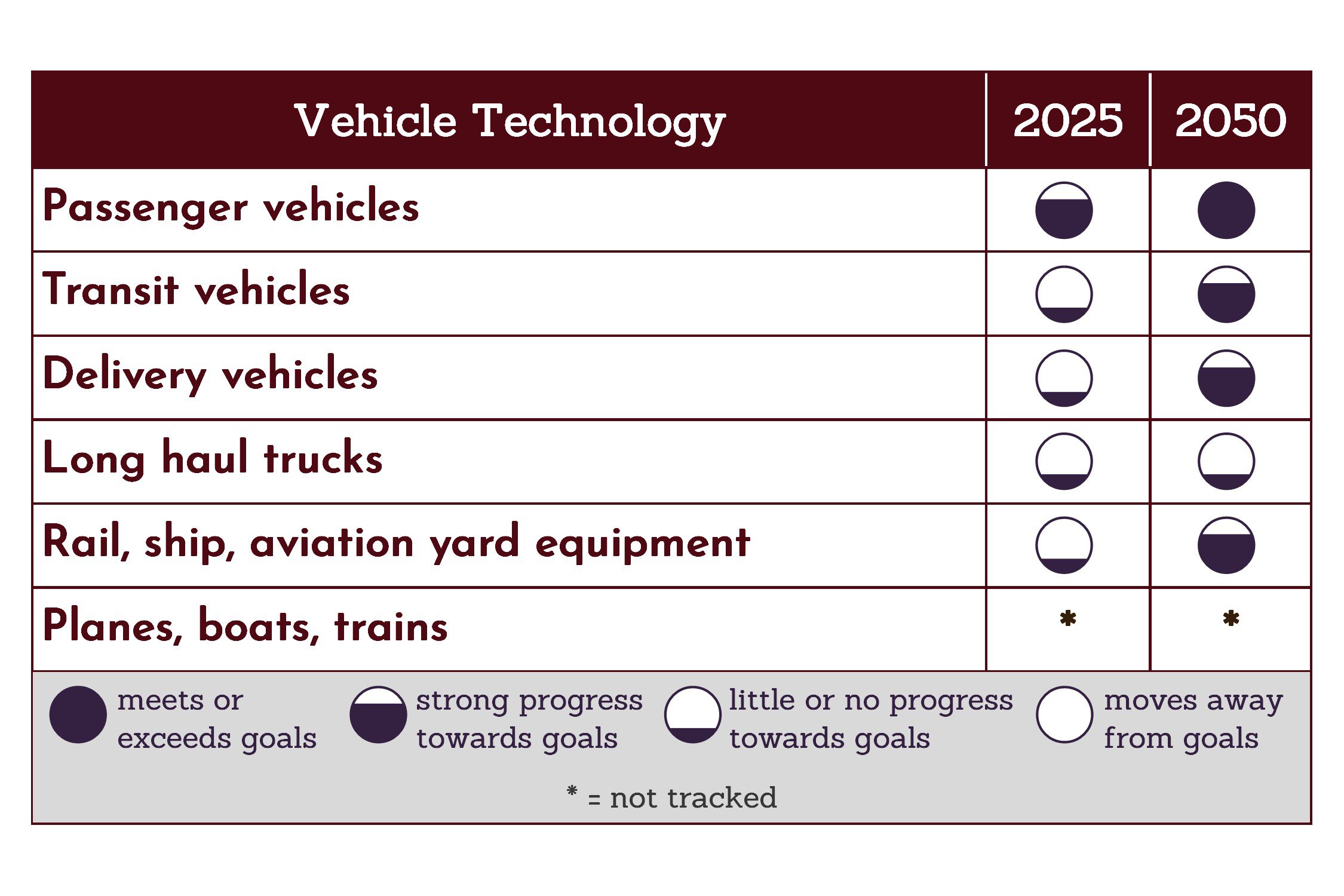
Vehicle Technology
Advancing vehicle technologies is central to reducing greenhouse gas emissions from transportation, and addressing climate change in Oregon.
New vehicle technologies that can reduce greenhouse gas emissions fall into two buckets: engine technologies that allow use of lower emission fuels, and technologies that improve fuel efficiency.
Engine technology
Internal combustion engines that run on gas and diesel are the most common types of engines found in today’s vehicles. However over the last several decades, new engines were developed that are able to use new types of fuels that produce lower emissions.
Some examples of these new fuels are electricity, natural gas, propane, and hydrogen.
Transitioning to vehicles that use lower emission fuels is one of the best ways to reduce greenhouse gas emissions from transportation.
Electricity is a lower emission fuel. Vehicles that have motors powered by electricity are commonly called electric vehicles (EVs). An EV motor runs on electricity fed from batteries, and EVs don’t emit greenhouse gas emissions when they use those motors to get around.
Other lower emission fuels like natural gas, propane and hydrogen, are used in engines that power transit and school buses, and freight trucks. Engines using those fuels produce less greenhouse gas emissions than the diesel engines they replace. Vehicles powered by hydrogen fuel cells produce zero tailpipe emissions.
Other vehicles can benefit from engines that use lower emission fuels and reduce their emissions. Examples include boats, trains, airplanes, and vehicles used in construction, agriculture, warehouses, and freight yards. Some technology is further along than others, but more options are commercially available every year.
As Oregon’s electric utilities work to achieve Oregon’s new Clean Energy law 2040, driving an EV will produce even fewer emissions over time. See the Oregon Department of Energy’s 2020 Biennial Energy Report for more information on electric vehicles and hydrogen vehicles.
More fuel efficient vehicles
It will take several years for vehicles powered by electricity and other lower emission fuels to become common on Oregon’s roads, especially larger vehicles like long-haul freight trucks. In the meantime, vehicle manufacturers are working to make gasoline and diesel engines more efficient, and meet Federal Corporate Average Fuel Economy (CAFE) standards.
More efficient gas and diesel engines use less fuel when they travel, which produces fewer greenhouse gas emissions. Fuel efficiency is measured in “fuel economy” or miles per gallon for gas and diesel-powered vehicles. For electric and other alternative fuel vehicles, we use “gallon-equivalent” measurements.
The more miles per gallon a vehicle gets, the more efficient it is, the less fuel it uses, and the less emissions it produces.
Hybrid vehicles are an example of using technology to make a gas engine more efficient. Hybrids have a gas engine and a small electric motor and battery. The electric motor assists the gas engine when the car drives, reducing the amount of gas it uses. The battery can be recharged via the car’s brakes, or in some vehicles, can be plugged in to a wall outlet or public charging station.
Vehicle emissions and fuel efficiency standards can only be established by the federal government and California. California standards are typically more rigorous, and Oregon has chosen to adopt California’s standards.
Progress snapshot
Passenger vehicles
New regulations that require all new passenger vehicles sales to be 100% zero emission in 2035 means Oregon is making good progress in the shift to electric passenger vehicles.
Transit and delivery vehicles, and long haul trucks
Transit, delivery vehicles, and long-haul trucks face more complicated technology, fueling, and cost challenges in the short term. New regulations improve the outlook through 2050.
Other off-road vehicles (rail, ship, aviation yard equipment, and planes, boats and trains)
Transition of other off-road vehicles to zero emissions are not covered by recent state regulations. However federal funding opportunities and market-based programs support the transition to lower emission vehicles for airports, rail and marine operations, and other sectors that are harder to electrify.
Explore each category below for an in-depth breakdown of our progress.

